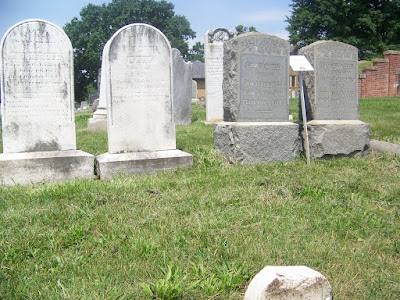
* * * * * * * * * * * * * * * * * * * * *
During the four years of the American Civil War, thousands of Schuylkill County’s sons served in Union blue. More than six hundred never returned home. From throughout Schuylkill County’s anthracite-laden coalfields to its fertile farmlands, volunteers, both young and old, from all social backgrounds and from all walks of life, willingly left their homes and families behind to fight for the preservation of the Union and the destruction of slavery. Schuylkill County soldiers fought—and died—in all of the war’s great campaigns and epic battles, from Antietam and Gettysburg in the East to Shiloh and Chattanooga in the war’s Western Theatre. Some served at the rank of general, several received the Medal of Honor for battlefield heroics, and many rose to great prominence while displaying uncommon valor and playing important roles both on campaign and in battle. Yet, from the highest-ranking general on down to the enlisted soldier, all who served were heroes.
* * * * * * * * * * * * * * * * * * * * *
They Will Be Remembered By A Grateful People focuses on the lives of but a few of the thousands of Civil War heroes who served from Schuylkill County. In this illustrated guide, designed specifically for children and young adults but entirely suitable for all ages, I tell the stories of such notables as General James Nagle, Colonels Benjamin Christ, George Wynkoop, and Henry Cake, as well some lesser-known but still very important figures such as Major Lewis Martin and young Jeremiah Helms, one of the youngest soldiers to give his life during the Civil War. Told, too, is the tragic story of the Allison Brothers from Port Carbon, all four of whom served, and all four of whom died. And, of course, the book begins with a look at the famed First Defenders, the first Northern volunteers to reach Washington following the commencement of the war. Two of the first five First Defender companies hailed from Pottsville. The story of Nicholas Biddle, an elderly African-American and former slave, is told as well. Biddle was among the first casualties of the war, struck down in the streets of Baltimore as he made his way with the First Defenders toward Washington.
In all, They Will Be Remembered By A Grateful People focuses on the lives and service of fifteen notable Civil War heroes from Schuylkill County. In addition to biographical sketches of these individuals, there are excellent illustrations of each, drawn by artist and Civil War historian Jared Frederick. It is my hope that as you read about these soldiers and reflect upon their service and sacrifice, you will discover just a small portion of Schuylkill County’s distinguished Civil War history and become inspired to learn more.
* * * * * * * * * * * * * * * * * * * * *
Although designed for a younger audience, They Will Be Remembered By A Grateful People is suitable for Civil War buffs of all ages, and especially for anyone interested in the history of Schuylkill County. Published by LuLu, the illustrated guide numbers 36 pages, and is now available for purchase. This guide makes for an ideal gift and would be an excellent addition to any classroom. Parents and educators are encouraged to purchase this book for their children and students.
* * * * * * * * * * * * * * * * * * * * *
For more information on They Will Be Remembered By A Grateful People, click here . Also, if you are interested in purchasing a copy, or several copies (remember, they make for a great gift), you can either order directly from the website linked above, or you can simply contact me at johnhoptak@hotmail.com
I am hoping that the book will soon be available at locations throughout Schuylkill County.
* * * * * * * * * * * * * * * * * * * * *
One more note. Jared's illustrations are simply incredible, and I cannot thank him enough for his excellent work. Below is his illustration of General James Nagle as it appears in the book, following that is the same illustration colored in by my sister, Angie. . .

.jpg)



 Major General Andrew Atkinson Humphreys,
Major General Andrew Atkinson Humphreys,  Lincoln Assassination conspirator David Herold, who lies within the family plot,
Lincoln Assassination conspirator David Herold, who lies within the family plot,

 And, of course, the Congressional Cemetery is the final resting place of famed photographer Matthew Brady.
And, of course, the Congressional Cemetery is the final resting place of famed photographer Matthew Brady. .JPG)

.JPG)
 Elbridge Gerry, vice-president under Thomas Jefferson and the only signer of the Declaration of Independence to be buried in Washington,
Elbridge Gerry, vice-president under Thomas Jefferson and the only signer of the Declaration of Independence to be buried in Washington,  and John Forsyth, Secretary of State under Presidents Jackson and Van Buren.
and John Forsyth, Secretary of State under Presidents Jackson and Van Buren.  Robert Mills, the first Federal architect, who designed the Washington Monument, the Treasury Building and Old Post Office, among many other structures,
Robert Mills, the first Federal architect, who designed the Washington Monument, the Treasury Building and Old Post Office, among many other structures,  John Phillip Sousa, and
John Phillip Sousa, and  J. Edgar Hoover.
J. Edgar Hoover.  Among the many cenotaphs, one can find a veritable who's who of important Congressmen, including Henry Clay and John Calhoun, Andrew P. Butler, Thaddeus Stevens, and Preston Brooks, among many others.
Among the many cenotaphs, one can find a veritable who's who of important Congressmen, including Henry Clay and John Calhoun, Andrew P. Butler, Thaddeus Stevens, and Preston Brooks, among many others. 